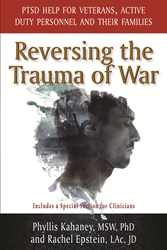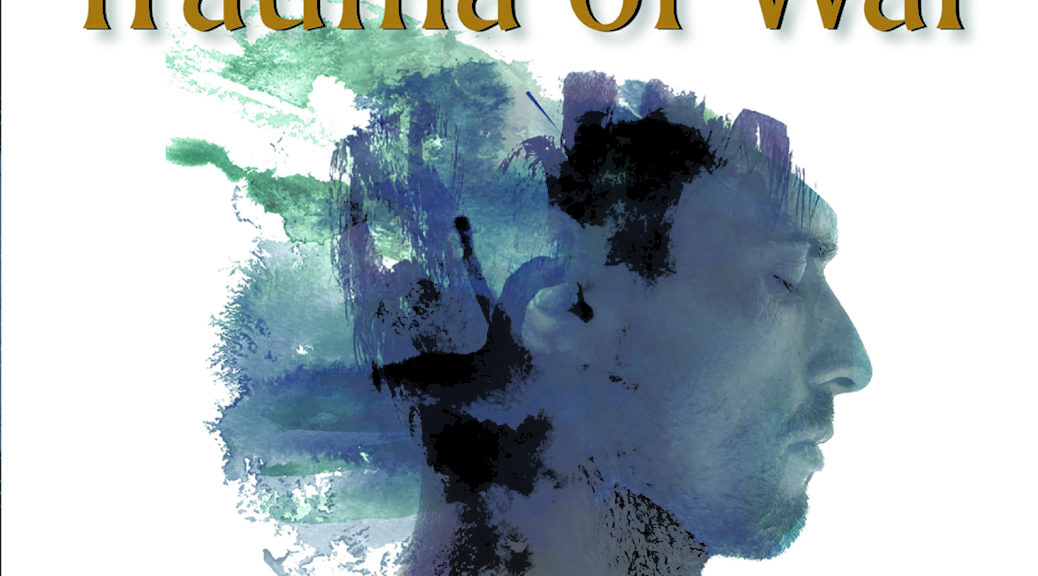
It is not only a must-read, but a must-use both by those suffering with PTSD and by practitioners who work with those who suffer from the ravages of war
NEW YORK (PRWEB)
November 10, 2020
Two leaders in the field of mental imagery, Phyllis Kahaney, M.S.W., Ph.D., and Rachel Epstein, J.D., L.Ac., bring a new tactic to military personnel and their families for treating post-traumatic stress disorder (PTSD), which affects up to 30% of veterans.
Based on current research and clinical experience, Reversing The Trauma of War: PTSD Help for Veterans, Active Duty Personnel, and Their Families (ACMI Press, October 2020, trade paperback; ISBN: 978-1883148-26-3, $18.00, 218 pages), offers readers a step-by-step mental imagery method proven to reduce stress and hypervigilance, calm anxiety and anger, and curb insomnia, nightmares, and flashbacks. When practiced for only minutes per day for 21 days, these exercises can help lead veterans, active duty personnel and their loved ones to find renewal and more fulfilled lives.
According to Brian J. Masterson, M.D. and Col, USAF (Ret), “It is not only a must-read but a must-use both by those suffering with PTSD and by practitioners who work with those who suffer from the ravages of war.”
Reversing the Trauma of War was born out of Phyllis Kahaney’s therapeutic work with veterans at the San Diego Vet Center as well as her personal experience overcoming PTSD with mental imagery.
Through her practice, Kahaney guided veterans and active duty personnel through mental imagery exercises—breathing paired with visualizations—to eliminate or reduce the symptoms of PTSD including intense anxiety, anger, and self-destruction, and successfully reintegrate into civilian life.
“Mental imagery is a powerful tool to build a freer, fuller life,” Kahaney said. “My own success with practicing mental imagery motivated me to pursue a career in social work and use mental imagery to help others, especially veterans suffering from PTSD. Reversing the Trauma of War crystalizes the methods I’ve used when counseling men and women who served our country into an easy-to-use guide for working through PTSD symptoms.”
Eager to provide hope and healing to more PTSD sufferers, particularly military personnel, Kahaney teamed with imagery expert Rachel Epstein, the director of the American Institute of Mental Imagery, to create exercises that everyone can use without clinical guidance.
“Having long worked in the field of mental imagery, I was drawn to the important work Phyllis is doing with veterans and the idea of creating a book specifically designed to teach American armed forces this powerful healing process,” Epstein said. “The simple techniques detailed in Reversing the Trauma of War provides a way for our nation’s veterans to clear layers of trauma and build more fulfilling lives for themselves.”
The program of mental and physical exercises in Reversing the Trauma of War can be applied anywhere, anytime to relieve the devastating effects of PTSD, and provides readers a pathway to a healthy, well-adjusted life. Because healing from trauma is not an individual effort, the book features in-depth chapters on imagery for family members and clinicians who are supporting those who suffer from PTSD.
Reversing the Trauma of War is available at Amazon, Barnes and Noble, and independent bookstores in the USA, Canada, the UK and Australia, in print and eBook.
About AIMI
Chartered by NYS Board of Regents, AIMI offers post-graduate training to health care professionals in mental imagery and allied techniques using a holistic model of health. Additionally, AIMI offers classes in self-healing to the general public.
Share article on social media or email:

